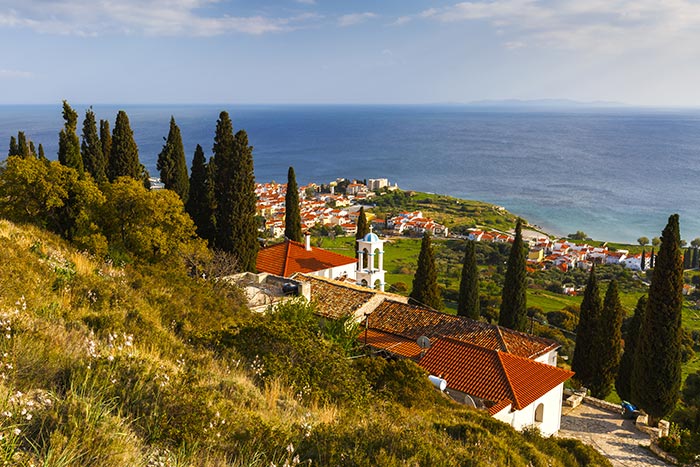
Christian History
Biblical Sites In Greece
Greece is very famous around the world for the unique masterpieces of Art. These masterpieces are mainly sanctuary and temples built to honor the ancient religion of the twelve Olympian Gods. You can see the ancient religion everywhere in Greece. The fact that the Ancient Greeks worshiped to many gods proves that were very faithful as according to their religious habits they had two essentials concepts: Hubris and the fear of the God. Greeks was so faithful that they have dedicated an altar to the Unknown God in case that they have forgotten someone.
The critical point in the religious history of Greece is Paul’s second missionary journey. Is a glorious and victorious journey. Is the journey which introduces the Word of God to Europe. Is the journey that is founding the first churches into European soil. Is the journey that converts a pagan but faithful country into the first Christian country in Europe. Is the fruitful soil where the seeds of Christianity planted and they are existing until nowadays. The presence of Paul is still alive in the biblical places of Greece. Below you can find the places that Paul honored and blessed with his labor and his preaching.
Athens
Apostle Paul’s visit to the historic and adorned city of Athens, city of the great poets and philosophers like Socrates, Solon and Themistocles and birthplace of the Principle of Reasonableness, marks one of the most challenging parts of his career as a missionary. He arrived alone to teach the true Word of the Lord, while Silas and Timothy remained in Macedonia. Though modern visitors are impressed with the great buildings of the Acropolis and Olympian Zeus, the Agora and the impressive Stoas, Saint Paul was stirred by the idolatry of the city.
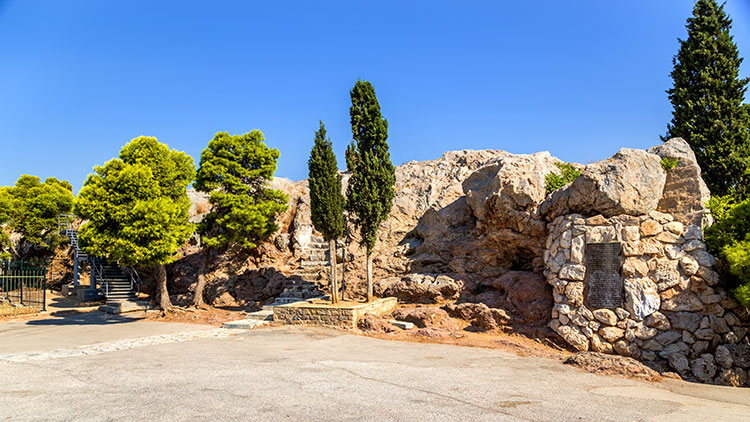
Thessalonica
Thessalonica is the second-largest city in Greece, situated on the north. The city of Thessalonica was founded in 315 BC by Cassander of Macedon. An important metropolis by the Roman period, Thessalonica was the second largest and wealthiest city of the Byzantine Empire. Because of Thessalonica’s importance during the early Christian and Byzantine periods, the city is host to several paleochristian monuments that have significantly contributed to the development of Byzantine art and architecture throughout the Byzantine Empire as well as Serbia. The evolution of Imperial Byzantine architecture and the prosperity of Thessalonica go hand in hand, especially during the first years of the Empire, when the city continued to flourish. It was at that time that the Complex of Roman emperor Galerius was built, as well as the first church of Hagios Demetrios. By the 8th century, the city had become an important administrative center of the Byzantine Empire, and handled much of the Empire’s Balkan affairs. During that time, the city saw the creation of more notable Christian churches that are now UNESCO World Heritage Sites, such as Hagia Sophia of Thessalonica, the Church of the Acheiropoietos, the Church of Panagia Chalkeon. When the Ottoman Empire took control of Thessalonica in 1430, most of the city’s churches were converted into mosques, but have survived to this day. Travelers such as Paul document the city’s wealth in Christian monuments during the years of the Ottoman control of the city. A notable fact about this city is that Thessalonica has more UNESCO World Heritage Sites listed than any other city in Greece, a total of 15 monuments.
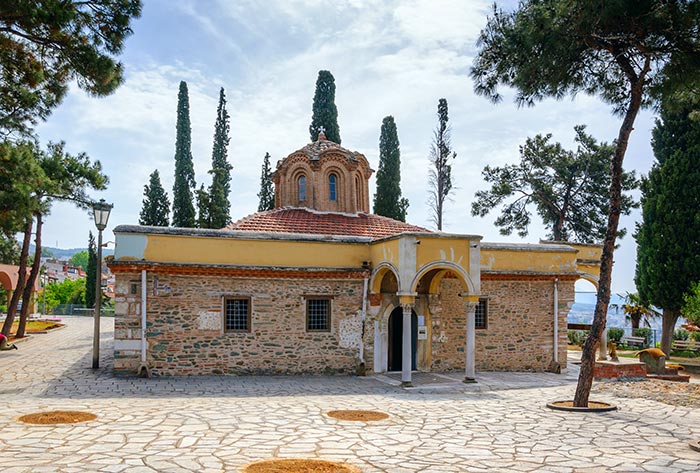
Corinth
Paul stayed in Corinth, it was one of the most important cities of ancient Greece, for eighteen months in 51-52 A.D. Corinth had direct communication with Rome and the west and it was a strategic place to dissemination of Revelation. His attempts to reform the citizens’ ways were met only by rioting-tribulations recorded in his two "letters to the Corinthians".
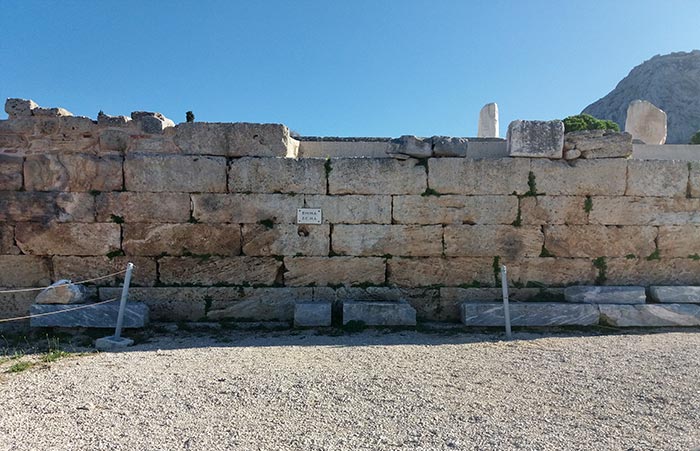
Philippi
Paul landed at Kavala and visited Philippi in 49AD and so began his mission in Europe. Characterized as "Gate of Europe and Asia", it was the first place in Europe to be disclosed of the Gospel. Despite being cast into prison in this place he retained a special affection for the Philippians, his first converts, and the congregation that he established was one of the earliest to flourish in Greece. It furnished the principal remains of the site: several impressive, although ruined, basilica churches.
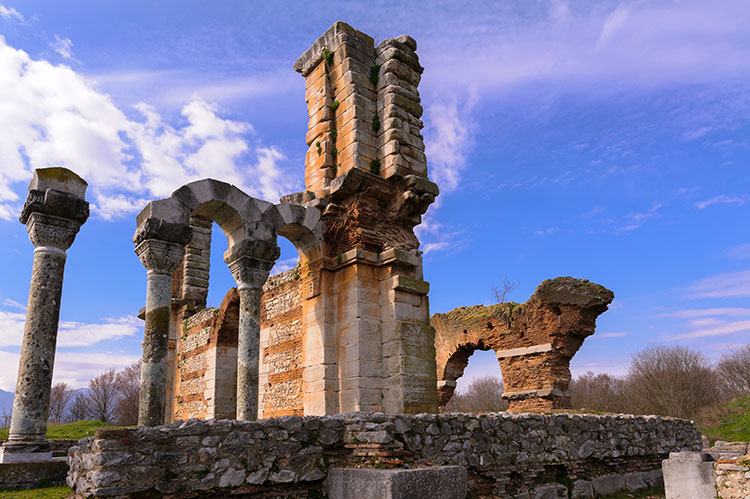
Patmos
The Island of the Apocalypse is a place of reference for all Christians today, also known as the "Jerusalem" of the Aegean. The Monastery of St John the Evangelist and the Cave of the Apocalypse where the Saint received the revelation constitute a major center of monastic life for the Orthodox world.
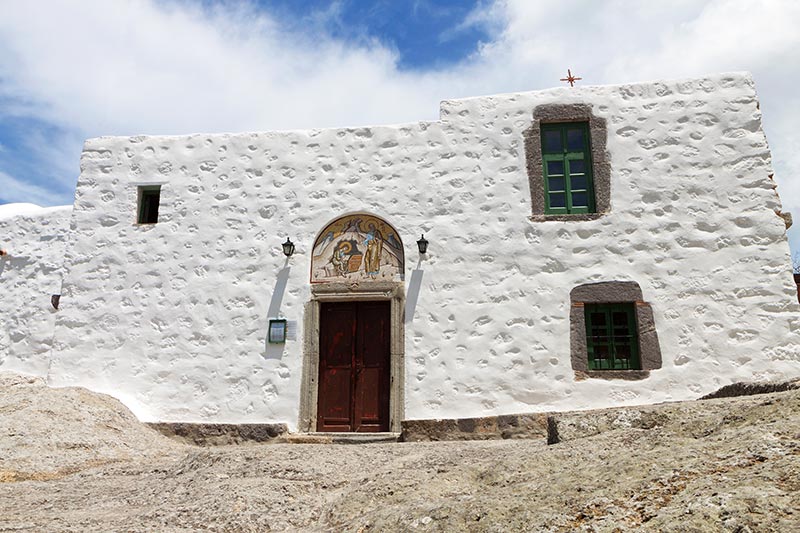
Kavala / Neapolis
Following the vision of Apostle Paul received at Troas, he journeyed to Kavala (by way of the island of Samothrace). Of the "abundance of Revelations" Apostle Paul had received, we are only privy to three in significant detail: the vision into Heaven with words he "could not utter", the Macedonian man vision at Troas and the vision of the Risen Savior on the Damascus road. It may be that Luke joins Apostle Paul here at Kavala, since the pronouns in the Book of Acts change from "them" to "we", suggesting the writer’s personal presence in the events until Philippi. The two-day journey from Troas to Neápolis on the second journey suggests the weather was good. The same journey took five days in less cooperative weather for the friends of Apostle Paul that were coming to see him in Troas from Philippi’s port, which is Neapolis (cp. Acts 20:6).
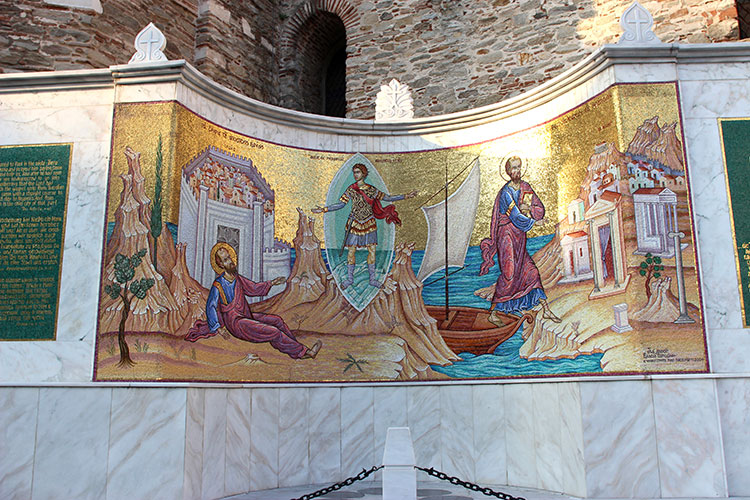
Veria (Beroea)
Paul preached in Veria (Acts 17: 1-13 of the New Testament) on two occasions, and a gaudy alcove shrine at the base of Mavromikhali marks the supposed spot of his sermons. But the town is more famous for the fifty or so small medieval churches, dating mostly from sixteen to eighteen century.
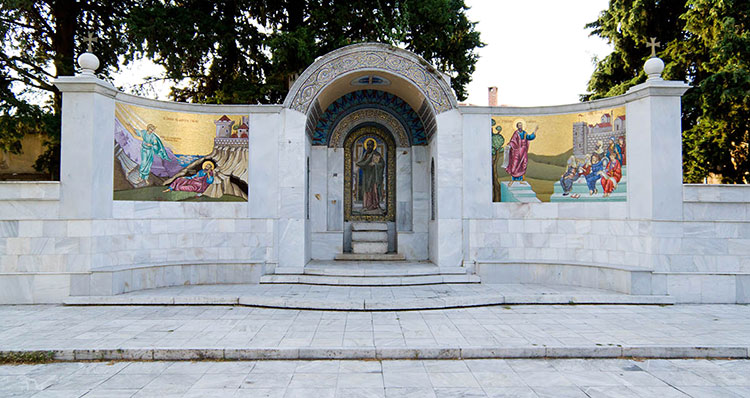
Heraklion (Fair Havens)
Paul visited the area of Fair Havens as he was being transported from Caesarea to Rome, as a Roman prisoner. Another place of interest in Herakleion is Gortyna which was the centre of Paul’s disciple, Titus.
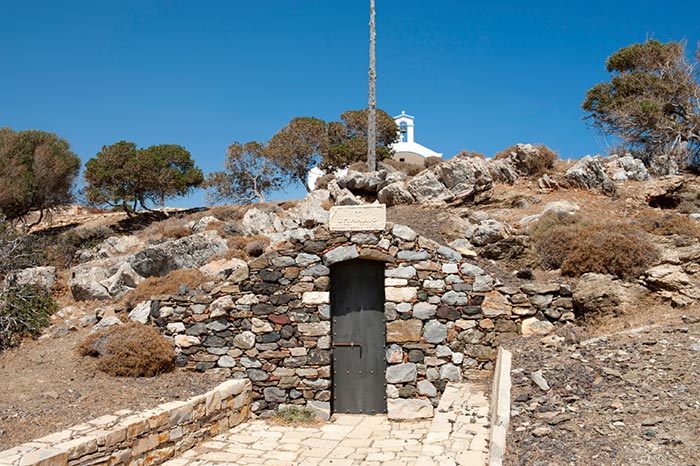
Amphipolis
A town in Macedonia, situated on the eastern bank of the Strymon (modern Struma or Karasu) some three miles from its mouth, near the point where it flows out of Lake Prasias or Cercinitis. The name is derived either from its being nearly surrounded by the stream or from its being conspicuous on every side, a fact to which Thucydides draws attention (in the place cited). Paul and Silas passed through it on their way from Philippi to Thessalonica, but the narrative seems to preclude a long stay (Acts 17:1).
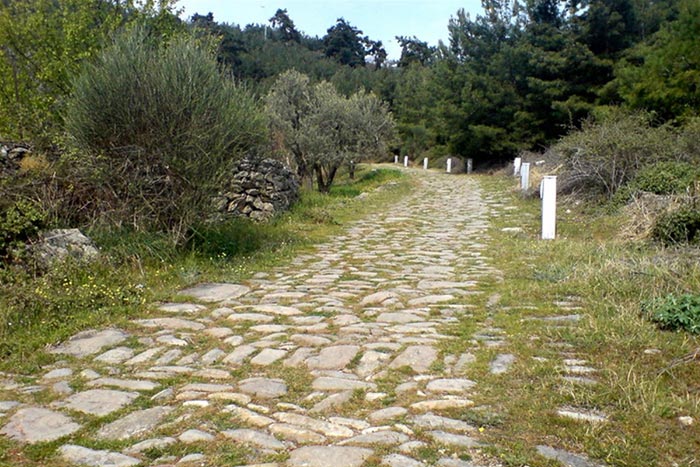
Apollonia
A town in Mygdonia, a district in Macedonia. It was situated a little to the south of Lake Bolbe, on the Via Egnatia, the great Roman road leading from the coast of the Adriatic to the river Hebrus (Maritza), one of the main military and commercial highways of the empire: it lay between Amphipolis and Thessalonica, a day's journey. Paul and Silas passed through the town on their journey from Philippi to Thessalonica, but do not appear to have stayed there (Acts 17:1).
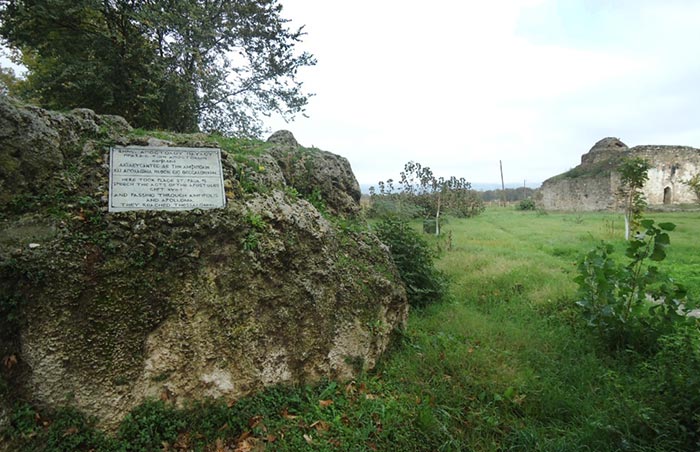
Nicopolis
The Nicopolis, to which Paul urges Titus to come (Titus 3:12) is the city of that name situated on the southwest promontory of Epirus. It is true that we do not hear of his preaching at Patras, Zacynthus, Cephallonia, Corcyra (the modern Corfu), which, as a way-station to and from Sicily, always held preeminence among the Ionian islands; but there can be little doubt that, if his plan of going to Nicopolis was carried out, he desired to evangelize the province of Epirus (as well Acarnania) in Western Greece. Indeed, it was in this very city of Nicopolis, probably, that he was arrested and taken to Rome for trial during one of the winters between 64-67 AD.
Nicopolis was situated only a few miles North of the modern Prevesa. The ancient city was founded by Augustus, whose camp happened to be pitched there the night before the famous fight with Antony (31 BC). In the time of Augustus, Nicopolis was a flourishing town. The emperor concentrated here the population of Aetolia and Acarnania, and made the city a leading member of the Amphictyonic Council. There are considerable ruins of the ancient city, including two theaters, a stadium, an aqueduct, etc.
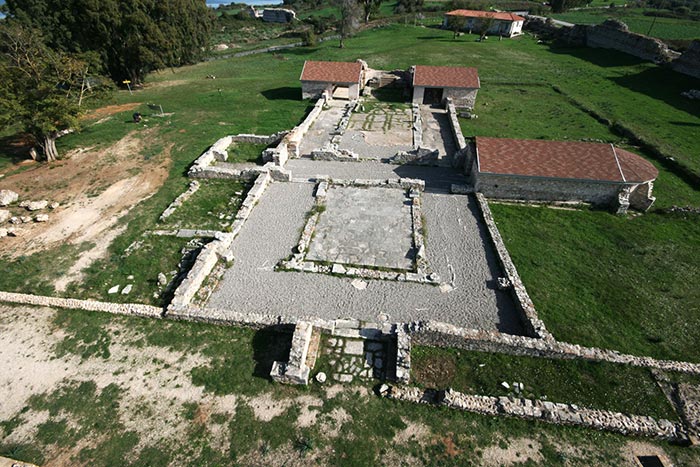
Rhodes
A celebrated island in the Mediterranean Sea. The city of Rhodes, its capital, was famous for its huge brazen statue of Apollo called the Colossus of Rhodes. It stood at the entrance of the harbor, and was so large that ships in full sail could pass between its legs. ED.) Rhodes is immediately opposite the high Carian and Lycian headlands at the southwest extremity of the peninsula of Asia Minor. Its position had much to do with its history. We have notice of the Jewish residents in Rhodes in 1 Macc. 15:23. Also Rhodes is mentioned once in the Old Testament (Ezek 27:15) and once in the New Testament (Acts 21:1). In Ezekiel, Rhodes is listed as one of the nations that traded with Tyre. According to local tradition, Paul’s ship landed in a small harbor at Lindos, which is known today as St. Paul’s harbor.
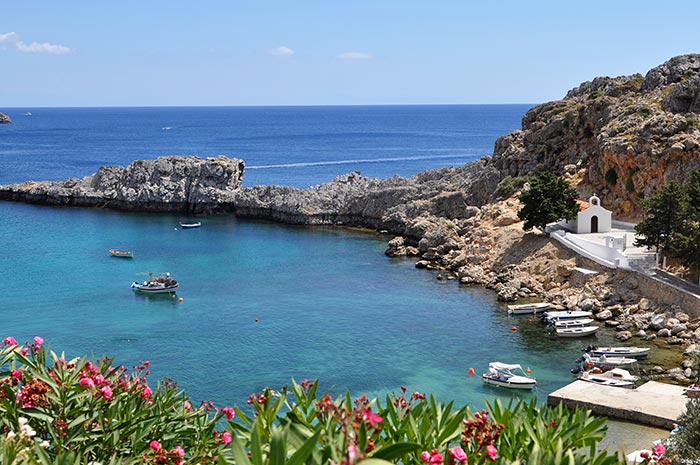
Samothrace
An island in the Aegean Sea, South of Thrace opposite the mouth of the Hebrus River, and Northwest of Troas. The island is mountainous, as the name indicates (see Samos), and towers above Imbros when viewed from the Trojan coast. The summit is about a mile high. The famous “Victory of Samothrace” (now in the Louvre) was set up here by Demetrius Poliorcetes circa 300 BC, and was discovered in 1863. Since that time (1873-75), the Austrian government carried on extensive excavations (see Conze, Hauser and Benndorf, op. cit.).
In the New Testament the island is mentioned in Acts 16:11. From Troas, Paul made a straight run to Samothrace, and the next day sailed to Neapolis (which see) on the Thracian coast, the port of Phillipi. At the northern end of Samothrace was a town where the ship could anchor for the night, and on the return journey (Acts 20:6) a landing may have been made, but no details are given. Pliny characterizes the island as being most difficult for anchorage, but because of the hazards of sailing by night, the ancient navigators always anchored somewhere if possible.
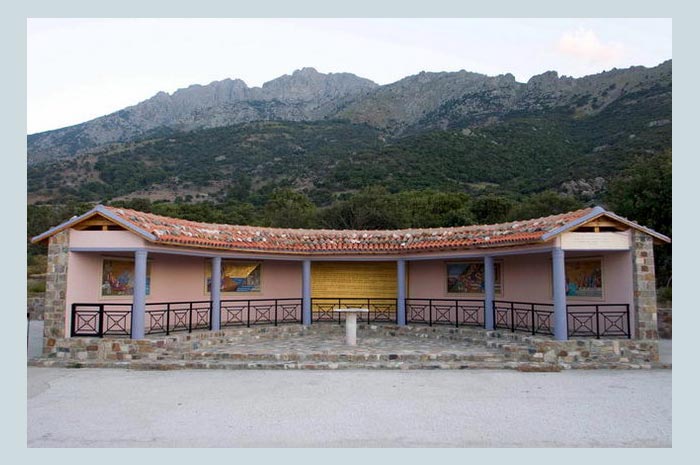
Cos
An island off the coast of Caria, Asia Minor, one of the Sporades, mountainous in the southern half, with ridges extending to a height of 2,500 ft.; identified with the modern Stanchio. It was famous in antiquity as the birthplace of Hippocrates (the father of medicine), of Ptolemy Philadelphus, and of the celebrated painter Apelles. The large plane tree in the center of the town (over 2,000 years old) is called "the tree of Hippocrates" to this day. Cos was one of the six Dorian colonies. It soon became a flourishing place of commerce and industry; later, like Corinth, it was one of the Jewish centers of the Aegean, as well as one of the financial centers of the commercial world in the eastern Mediterranean. Among the benefactors of the people of Cos was Herod the Great. It is mentioned in connection with Paul’s third missionary journey in Acts 21:1, and in its relations with the Jews in 1 Macc 15:23; Ant, XIV, vii, 2; x, 15; BJ, I, xxi. 11. For a list of works on the island see Paton-Hicks, Inscriptions of Cos, ix.
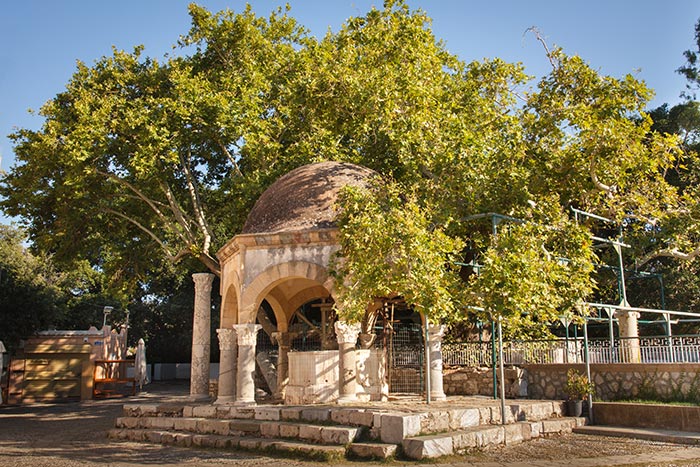
Samos
Acts 20:14-15: “And when he met us at Assos, we took him on board and went to Mitylene. And sailing from there we came the following day opposite Chios; the next day we touched at Samos; and the day after that we went to Miletus.” The reference in Scripture to Samos is almost certainly a reference to the city today known as Pythagorio.
